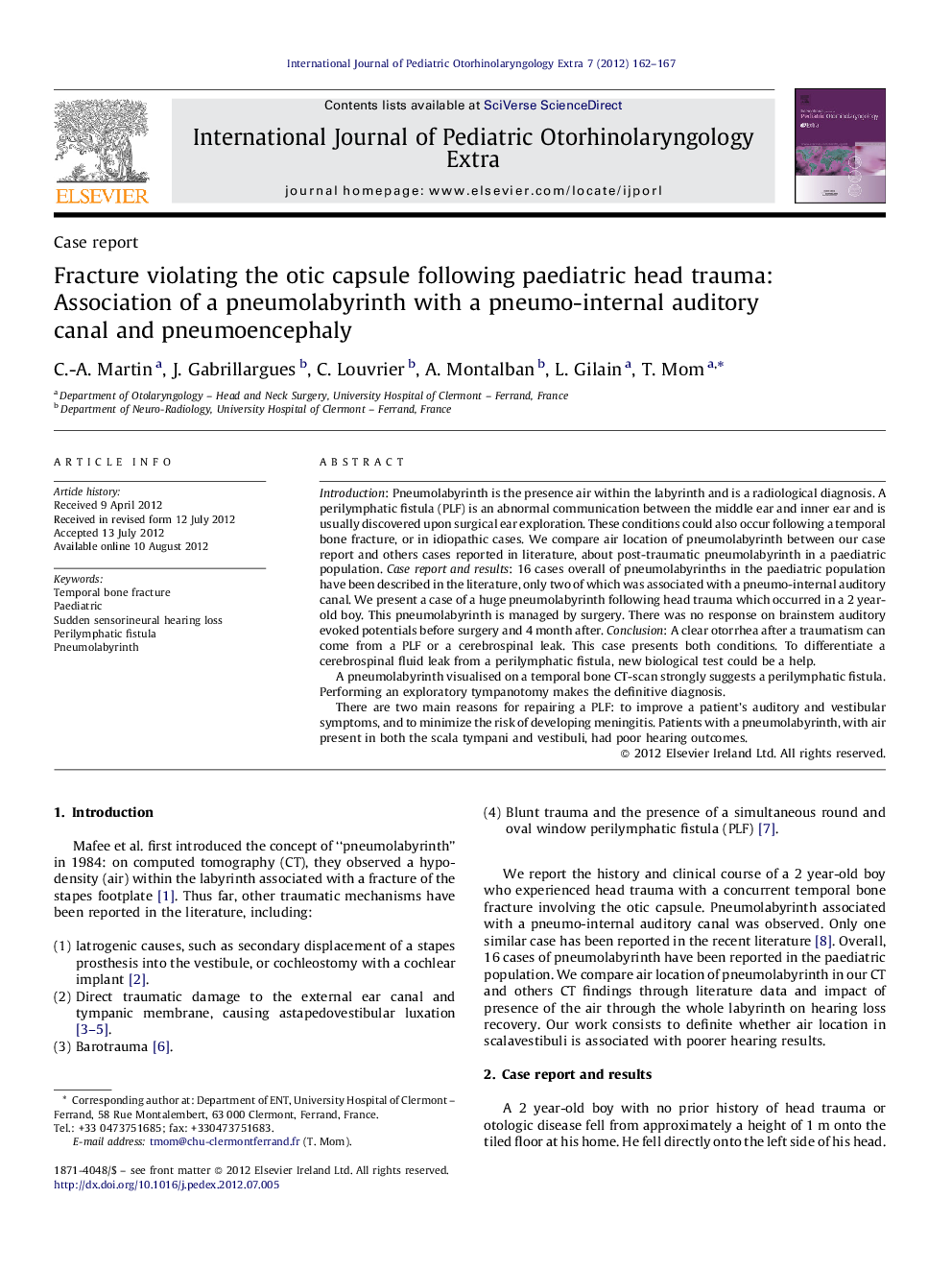| Article ID | Journal | Published Year | Pages | File Type |
|---|---|---|---|---|
| 4116001 | International Journal of Pediatric Otorhinolaryngology Extra | 2012 | 6 Pages |
Introduction: Pneumolabyrinth is the presence air within the labyrinth and is a radiological diagnosis. A perilymphatic fistula (PLF) is an abnormal communication between the middle ear and inner ear and is usually discovered upon surgical ear exploration. These conditions could also occur following a temporal bone fracture, or in idiopathic cases. We compare air location of pneumolabyrinth between our case report and others cases reported in literature, about post-traumatic pneumolabyrinth in a paediatric population. Case report and results: 16 cases overall of pneumolabyrinths in the paediatric population have been described in the literature, only two of which was associated with a pneumo-internal auditory canal. We present a case of a huge pneumolabyrinth following head trauma which occurred in a 2 year-old boy. This pneumolabyrinth is managed by surgery. There was no response on brainstem auditory evoked potentials before surgery and 4 month after. Conclusion: A clear otorrhea after a traumatism can come from a PLF or a cerebrospinal leak. This case presents both conditions. To differentiate a cerebrospinal fluid leak from a perilymphatic fistula, new biological test could be a help.A pneumolabyrinth visualised on a temporal bone CT-scan strongly suggests a perilymphatic fistula. Performing an exploratory tympanotomy makes the definitive diagnosis.There are two main reasons for repairing a PLF: to improve a patient's auditory and vestibular symptoms, and to minimize the risk of developing meningitis. Patients with a pneumolabyrinth, with air present in both the scala tympani and vestibuli, had poor hearing outcomes.
